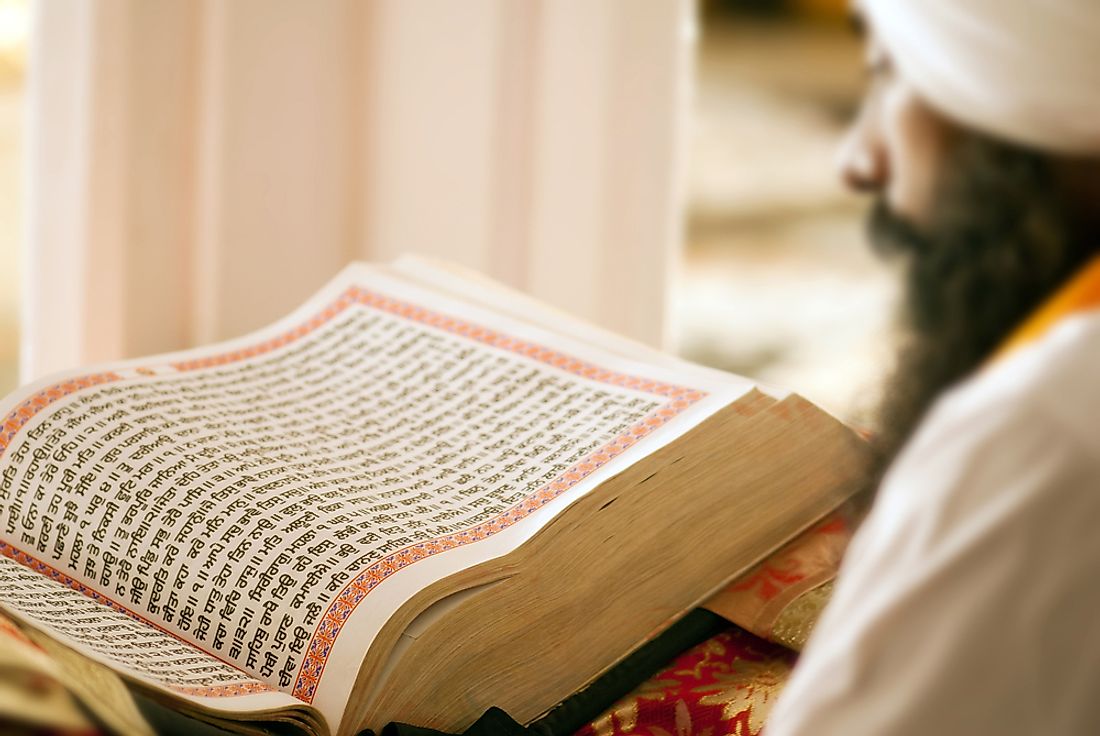
Sacred Texts Of Major World Religions
The mystical pillars of all world faiths are surprisingly within reach in the form of a bundle of texts and ancient records that have been delicately protected for thousands of years. Between major world religions like Christianity, Islam, Hinduism, Buddhism, Judaism, and Taoism, monks from long-forgotten ages worked diligently to ensure the versions we carry today. Their hope was to maintain these texts to accurately represent the histories and faiths of cultures and civilizations that now exist only in their modern-day descendants.
However, many religions suffer from an occasional fracturing over core values, and with that, new sacred texts blossom in an attempt to guide the spiritual flock of that era. Furthermore, what we read today, in modern tongues, can never accurately represent the forgotten cultural references and idioms that some of these texts relied on for a specific audience. Some degree of critical analysis is necessary to approach these religious epics where some stories could have been either allegories or even stageplays that are now, possibly mistakenly, taken literally. Due to the thousands of years of historical and religious knowledge needed to decipher each of these texts, an appropriate way to begin is to ask who, what, when, where, and why? That caution is vital when considering that different faiths might revere a single religious book. Therefore, read closely to uncover the secrets and dramatic events that ultimately defined each of these sets Sacred Texts.
The Holy Bible - Christianity

Primarily, the sacred texts of Christianity are the Old and New Testaments found within the Bible. The Bible is divided into the Old Testament, also known as the Torah to the Jews, which is sacred to both Jews and Christians, and the New Testament, which is specifically Christian. Protestant, Orthodox, and Catholic Christians all share these texts but may have some differences in their canon. The New Testament is specifically centered around the teachings of Jesus Christ, whom Christians regard as God on Earth.
The Old Testament, also known as the Hebrew Bible, contains 39 books. In the Protestant Bible, 46 books in the Catholic Bible, and up to 49 books in the Orthodox Bible. It was written approximately between 1400 BCE and 165 BCE by multiple authors. The New Testament contains 27 books, which are the same across all Christian denominations. These books were written by various authors between 50 and 100 CE. The original language of the Old Testament is primarily Hebrew, with some portions in Aramaic, while the New Testament was written in (Koine) Greek.
Translations of the Bible have changed the original texts over time, though efforts have been made to maintain the accuracy and integrity of the translations. Language differences, cultural context, and the need for interpretation have led to variations among translations. It is also important to note that the original texts themselves have undergone changes over time due to scribal errors, editing, and additions.
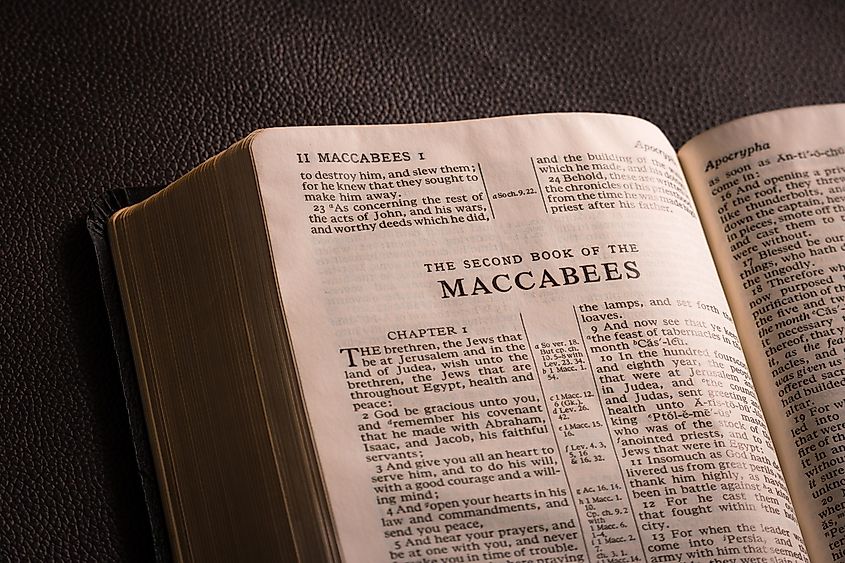
Catholics have a set of books known as the Apocrypha or Deuterocanonical books, which are included in the Catholic Old Testament but are not accepted by most Protestants. While some Protestant denominations may refer to or study these texts for historical or cultural context, they generally do not consider them canonical or divinely inspired. Orthodox Christians also have additional texts that are not recognized by Catholics or Protestants.
The authors of the biblical texts include various prophets, apostles, and other figures throughout ancient Israel's history and the early Christian church. The study of early church tradition is especially important in Eastern Orthodoxy. The exact authorship of many books is debated or unknown, and some books may have multiple authors or have been edited over time.
The texts within the Bible discuss various topics, such as the history of the Israelites, the life and teachings of Jesus Christ, ethical and moral teachings, and prophetic messages. The Old Testament primarily focuses on the covenant between God and the Israelites, while the New Testament emphasizes the life, death, and resurrection of Jesus Christ and the establishment of the Christian church.
The Quran, Hadith, and the Tafsir - Islam
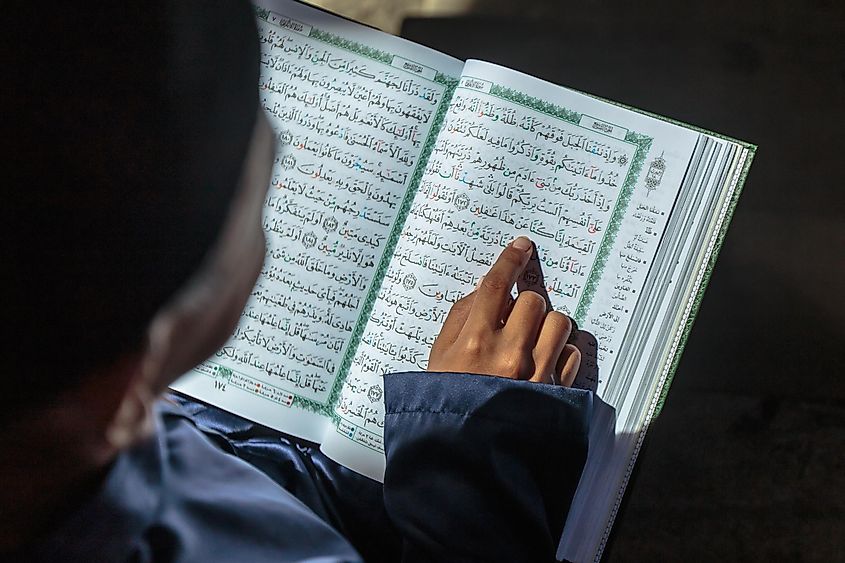
The sacred texts and written collections of Islam include the Quran, the Hadith, and the Tafsir. The Quran is the primary religious text of Islam, believed to be the literal word of God as revealed to the Prophet Muhammad by the angel Gabriel. The Hadith are collections of reports documenting the sayings, actions, and opinions of the Prophet Muhammad. Tafsir is the exegesis or interpretation of the Quran. There are some differences in the compilations of the Hadith and interpretation of the texts between Sunni and Shia Islam.
The Quran discusses a wide range of topics, including theology, morality, law, guidance for personal conduct, and the relationship between God and humanity. It is divided into 114 chapters called Surahs, which vary in length and cover diverse subjects. The Hadith collections contain reports on various aspects of the Prophet Muhammad's life, providing context and elaboration on the teachings of the Quran.
The Quran was revealed to the Prophet Muhammad over a period of 23 years (610-632 CE). The original language of the Quran is classical Arabic. The Hadith was compiled by various scholars in the first few centuries after the Prophet's death. There have been many translations of the Quran and Hadith into different languages over time, and while the translations may have varied, the original Arabic text is considered immutable.
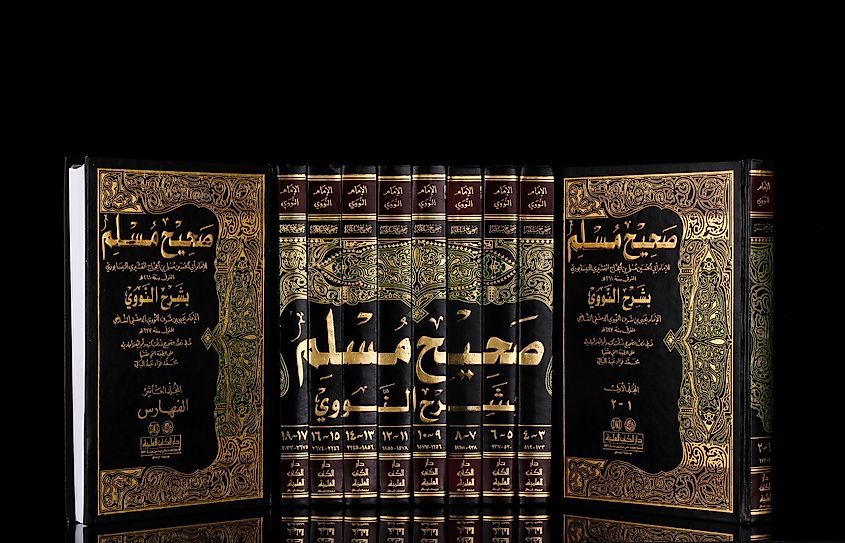
While the Quran is believed to have been verbally revealed by God to the Prophet Muhammad through the angel Gabriel, the Hadith is slightly different. The Hadith was written by various scholars who collected reports from people who had direct or indirect contact with the Prophet. The most widely accepted Hadith collections in Sunni Islam are Sahih al-Bukhari and Sahih Muslim, while in Shia Islam, the main collections are Al-Kafi, Man La Yahduruhu Al-Faqih, Tahdhib Al-Ahkam, and Al-Istibsar.
Sunni and Shia Muslims do refer to some of each other's sacred texts, although the degree of acceptance and interpretation of the texts can differ significantly. While both Sunni and Shia Muslims accept the Quran as the central sacred text, they differ in their acceptance of certain Hadith collections. Sunni Muslims generally do not give the same weight to Shia Hadith collections and vice versa. However, some common ground can be found in the study and interpretation of shared texts.
The Sacred Texts of Hinduism
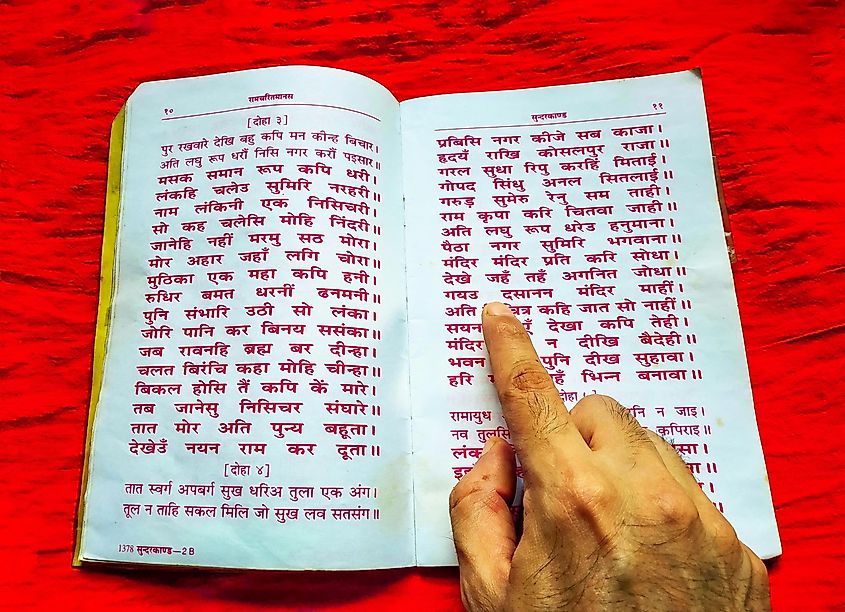
Hinduism has a vast collection of sacred texts and written collections, including the Vedas, Upanishads, Puranas, and more. The Vedas are the oldest and most important texts, composed between 1500 and 500 BCE. They consist of four parts: Rigveda, Yajurveda, Samaveda, and Atharvaveda. These texts contain hymns, mantras, rituals, and philosophical discussions. The Upanishads discuss the essence of reality, self, and the universe. Scribes compiled them between 800 and 500 BCE.
The Puranas, composed between 500 CE and 1000 CE, are a genre of religious texts that narrate the universe's history, legends, and myths. The Bhagavad Gita, a part of the Indian epic Mahabharata, is another important Hindu scripture that presents a conversation between Prince Arjuna and the god Krishna on various topics such as duty, action, and devotion.
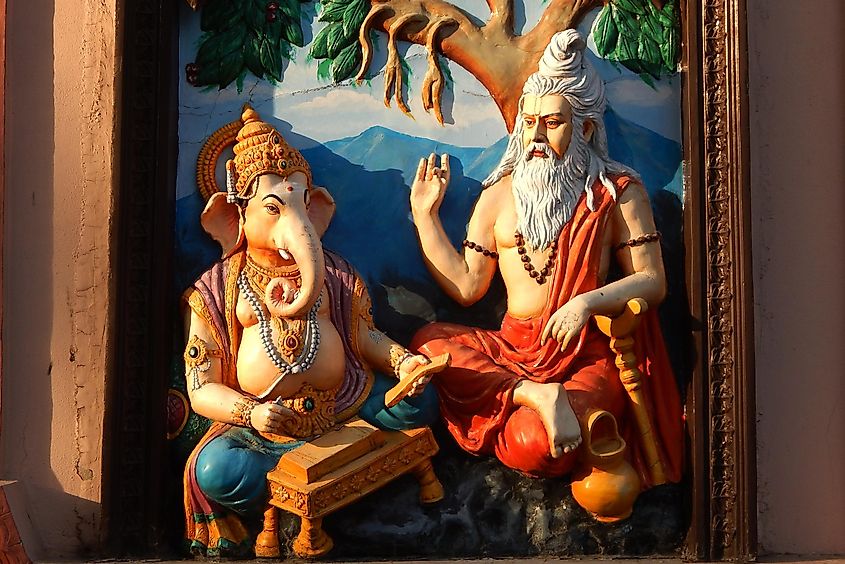
The authors of these texts are largely unknown, though some are likely sages such as Vyasa and Valmiki. They wrote in Sanskrit, an ancient Indian language. Over time, scribes translated the texts into various languages, which could have led to differences in interpretation. However, the core teachings have largely remained consistent.
The major sects of Hinduism, such as Vaishnavism, Shaivism, Shaktism, and Smartism, acknowledge each other's sacred texts. They have different emphases and interpretations of the texts but generally accept their authority. Vaishnavism focuses on the worship of Vishnu, Shaivism on Shiva, Shaktism on the Divine Mother, and Smartism on the worship of multiple deities. Despite their differences, these sects share a common foundation in the Vedas and other sacred texts.
The Sacred Texts of Buddhism

Buddhism has various sacred texts, the most important of which are the Tripitaka and the Mahayana Sutras. The Tripitaka is the primary holy text for Theravada Buddhists, while Mahayana Buddhists revere the Mahayana Sutras.
The Tripitaka, or "Three Baskets," is a collection of three sections: the Vinaya Pitaka (monastic rules), the Sutta Pitaka (teachings and discourses), and the Abhidhamma Pitaka (philosophical and psychological analysis). The Mahayana Sutras encompass a vast range of texts, including the Prajnaparamita Sutras (Perfection of Wisdom), the Lotus Sutra, the Avatamsaka Sutra, the Pure Land Sutras, and the Vimalakirti Sutra, among others. There are also other texts in the Vajrayana tradition, such as the Tibetan Book of the Dead, which Vajrayana Buddhists revere.
Major Buddhist sects, such as Theravada and Mahayana, generally respect and study each other's sacred texts to some extent, recognizing their shared roots and the value of diverse perspectives. However, they may prioritize their own core texts and interpret them differently according to their respective traditions and beliefs.

The sacred texts of Buddhism discuss a wide range of topics, including the teachings of the Buddha, ethical conduct, meditation, the nature of reality, the path to enlightenment, and the nature of suffering and its cessation. They also guide monastic life and the community of practitioners.
The texts' age varies, but scribes wrote down most of the Tripitaka between the 1st century BCE and the 1st century CE. However, the oral tradition potentially dates back to the time of the historical Buddha in the 5th century BCE. Likewise, the Mahayana Sutras were composed between the 1st century BCE and the 5th century CE. The original language of the Tripitaka is Pali, an ancient Indian language closely related to Sanskrit. The Mahayana Sutras were written in various languages, including Sanskrit and Gandhari.
According to traditional history, the teachings in the Tripitaka were transmitted orally by the disciples of the Buddha and later written down by the monastic community. The authorship of the Mahayana Sutras is more complex, as some texts claim to be the direct teachings of the Buddha. In contrast, others were sayings of various Buddhist masters or celestial beings. Translations of Buddhist texts have indeed changed over time, as they have been translated into numerous languages and adapted for different cultures.
The Tanakh and the Talmud - Judaism
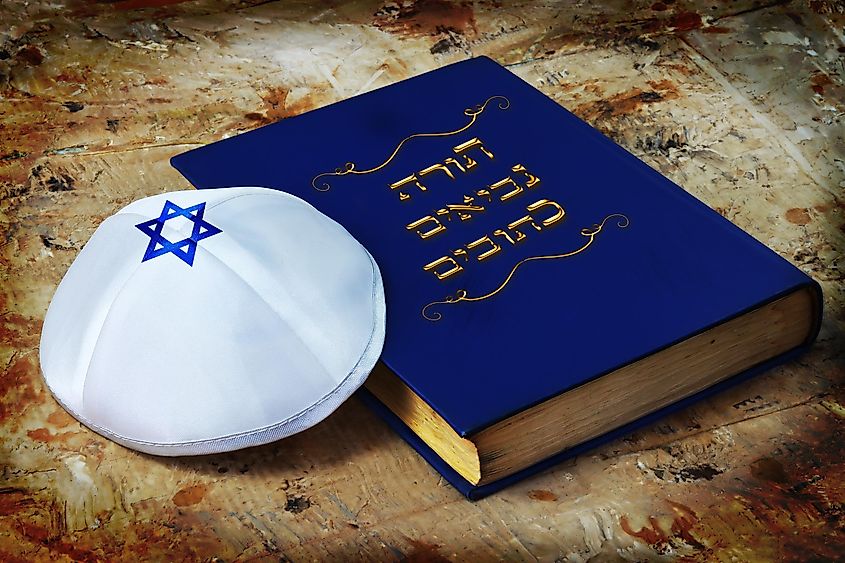
The sacred texts of Judaism primarily include the Hebrew Bible, also known as the Tanakh, and the Talmud. The Tanakh consists of three parts: the Torah (Pentateuch), the Nevi'im (Prophets), and the Ketuvim (Writings). The Talmud is a gathering of rabbinic discussions, interpretations, and laws, which has two main versions: the Babylonian Talmud and the Jerusalem Talmud.
Different Jewish sects, such as Orthodox, Conservative, Reform, and Reconstructionist, generally accept the same sacred texts, although they may interpret them differently. All sects recognize the importance of the Tanakh, while the Talmud is primarily a central text in Orthodox and Conservative Judaism. In some cases, specific mystical or philosophical texts, such as the Zohar, are more prominent within particular movements, like Kabbalah and Hasidic Judaism.
Major Jewish sects generally respect each other's sacred texts, but the degree to which they use and rely on them may vary. For example, while Orthodox Judaism strictly adheres to the interpretations in the Talmud, Reform Judaism may not emphasize the Talmud's legal aspects as much.
The sacred texts discuss a wide range of topics, from religious laws, ethics, and moral teachings to historical narratives, poetry, and prophetic visions. The Torah contains the foundational laws and narratives of Judaism, the Nevi'im recounts the stories of prophets and their messages, and the Ketuvim includes poetic, philosophical, and historical writings.
The Hebrew Bible (Tanakh) writings were composed over approximately 1,000 years, from the 12th to the 2nd century BCE. The language is Biblical Hebrew, with some portions in Biblical Aramaic. Scribes compiled the Talmud between the 3rd and 6th centuries CE, with the Babylonian Talmud finishing around 500 CE and the Jerusalem Talmud around 400 CE. Both versions of the Talmud were written in a mixture of Hebrew and Aramaic.
Over time, translations of Jewish texts have evolved, and some meanings may have shifted or been lost. The Septuagint, a Greek translation of the Hebrew Bible completed in the 3rd to 2nd centuries BCE, is one of the earliest translations. Additionally, the Masoretic Text, a standardized version of the Hebrew Bible, was developed by Jewish scholars between the 7th and 10th centuries CE to ensure consistency in transmission and interpretation. Many modern translations are based on the Masoretic Text.
The authors of the Hebrew Bible were various prophets, scribes, and poets, with some parts traditionally ascribed to specific figures, like Moses for the Torah or King David for the Psalms. However, modern scholarly consensus suggests that multiple authors likely composed and edited the texts over time. The Talmud is a compilation of discussions by rabbis and scholars who contributed to its development over several centuries.
The Sacred Texts of Taoism

Taoism is an ancient Chinese philosophy and religious tradition that emphasizes living in harmony with the Tao, the natural flow of the universe. Its sacred texts and collections of writings are numerous and varied, reflecting the diversity of Taoist thought and practice. Significant texts include the Tao Te Ching, the Zhuangzi, and the Daozang. Different sects may refer to alternate collections, but these works are generally considered foundational for Taoism. Classical Chinese is the language of the original Tao texts; over time, numerous languages received their translations.
The Tao Te Ching is the primary text of Taoism, attributed to the legendary sage Lao Tzu. Ancient scholars recorded the oral teachings in written form around the 5th century BCE, and it consists of 81 short chapters. The text is written in Classical Chinese, discussing the nature of the Tao, the art of governing, and the principles of leading a harmonious and virtuous life.
The Zhuangzi, attributed to the philosopher Zhuang Zhou who wrote it around the 5th to 3rd century BCE, is another critical Taoist text. The text contains allegories, anecdotes, and parables, delving into philosophy, the relativity of human values, and the importance of spontaneous and natural living.
The Daozang, also known as the Taoist Canon, is a large collection of writings with over 1,400 texts. Emperors and dynasties compiled it in various stages between the 5th and 15th centuries. The Daozang contains various materials, such as scriptures, commentaries, liturgical texts, and works on alchemy, cosmology, and meditation. The content of the Daozang varies between different editions, reflecting the various sects and schools of Taoism.
The strength of our shared humanity has always rested on our ability to communicate with each other. That communication includes sharing practical ideas and spiritual values that guide our communities and provide hope during overwhelming distress. Each sacred text embodies that criteria: certain proverbs share information like the ideal way to harvest crops, and others teach ways to live peacefully during famine or wartime. Despite a global trend towards secularism, modern institutions are founded on many of the values that our ancestors weaved into these holy books and teachings; for that, we salute them.







